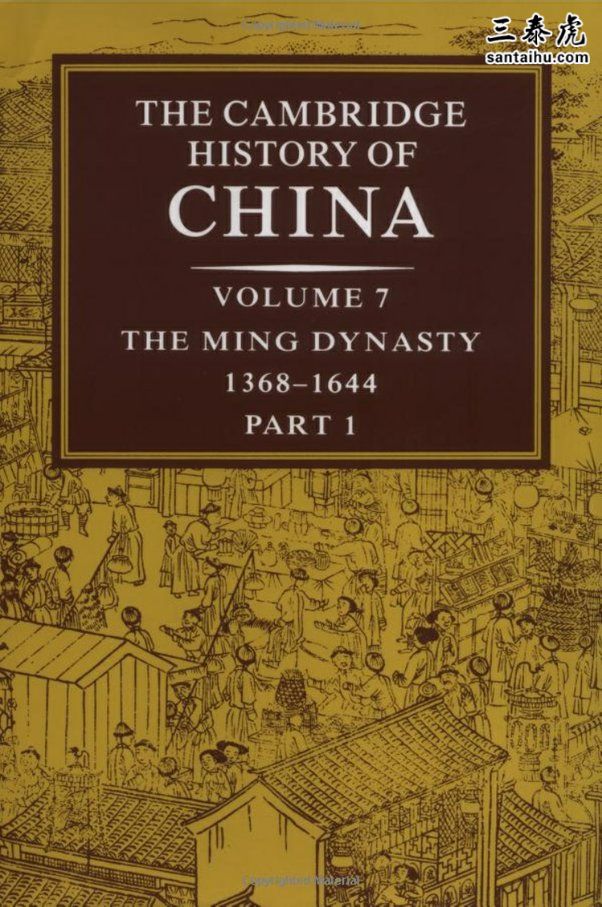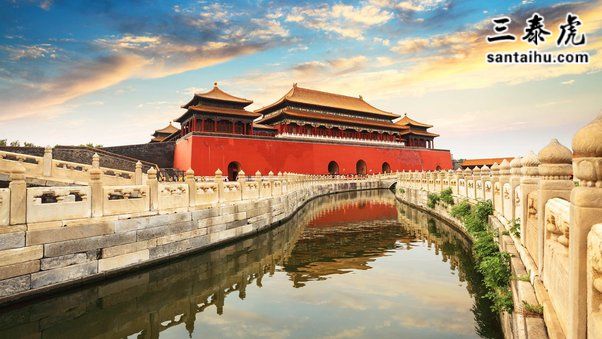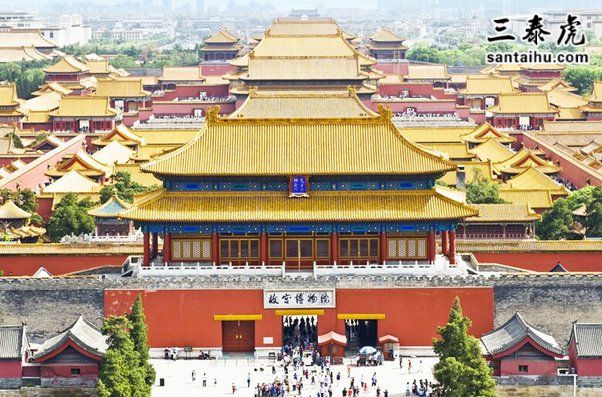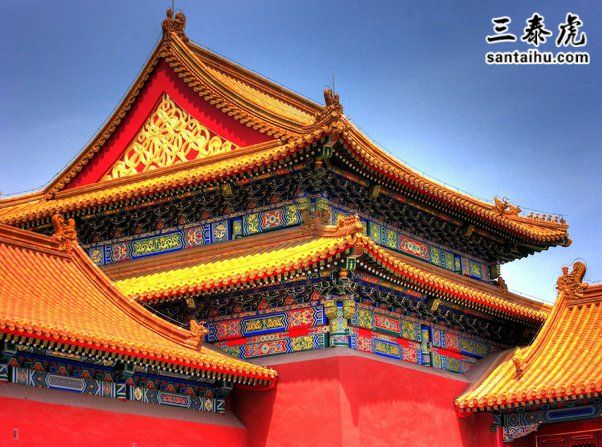Is it true that China Forbidden City was built by a Vietnamese architect?
中国的故宫是由一位越南建筑师建造的,这是真的吗?
以下是Quora读者的评论:
Tuan Nguyen
Q. Is it true that China Forbidden City was built by a Vietnamese architect?
A. Nguyễn An: The Man Who Built the Forbidden City
问:中国的故宫真的是由一位越南建筑师建造的吗?
答:阮安:建造故宫的人

During the Ming Dynasty’s invasion of Vietnam in 1407, many Vietnamese professionals (poets, military experts, architects, engineers, etc.) were captured and brought back to China. Among them was a prisoner named Nguyễn An (Juan An in Chinese), a man who would later designed and oversaw the construction of the Peking Citadel and the entire Forbidden City of Beiing.
在1407年明朝对越南的征战中,许多越南的专业人士(诗人、军事专家、建筑师、工程师等等)被俘并被带回中国。其中有一个名叫阮安(中文拼音为Juan An)的俘虏,这个人后来设计并监督了北京城和整个北京故宫的建造。

Nguyễn An was a talented official of the Tran Dynasty. He was captured by the Ming Army and brought back to China as a gift from the illegitimate Ho Clan. From then on, he would be known in Chinese history as Juan An, a eunuch of the Ming’s imperial court.
For his talents, Nguyễn An was given the task of constructing the Peking Citadel and the Forbidden City of Peking (Beiing). The size of his workforce was literally in the millions, composing of soldiers, workers, and prisoners. A large number of the laborers were also Vietnamese, captured by the Ming during their invasions.
阮安是越南陈朝一位有才华的官员。他被明军俘虏,并作为篡位的胡氏家族进献给明朝的礼物被带到中国。从那时起,他在中国历史上以明朝宫廷太监“阮安(Juan An)”的身份为人所知。
由于他的才华,阮安被赋予了建造北京城和北京故宫的任务。他指挥的劳动力数量实际上多达数百万,其中包括士兵、工人和囚犯。大量的劳工也是越南人,是明朝在征战中俘获的。

The fact that Juan An (Nguyễn An) was Vietnamese had been obscured in Chinese history for centuries. It is only recently, with long and intricate research, did these facts began to surface. Research made by the University of Cambridge clearly states that “the chief architect was an Annamese eunuch named Juan An (d. 1453) who also played a major role in rebuilding Peking,” (Mote & Twitchett, 1988: 241). Annam is what Vietnam was referred to by the Chinese during this period, even though that was never our official name. Woo! That was interesting. Maybe next week I’ll tell you who really invented the cannon!
几个世纪以来,阮安(Juan An)是越南人的这一事实在中国历史中一直被掩盖。只是最近,经过长期而复杂的研究,这些事实才开始浮出水面。剑桥大学的研究明确指出:“首席建筑师是一位名叫阮安(卒于1453年)的安南太监,他在重建北京城的过程中也发挥了重要作用。”(牟复礼和崔瑞德,1988年:第241页)。“安南”是这一时期中国人对越南的称呼,尽管那从来都不是我们(越南)的正式国名。哇哦!这很有意思。也许下周我会告诉你到底是谁发明了火炮!

Source:
Le Thanh Hoa, Du Mien. Vietnam: The Springhead of Eastern Cultural Civilization. Trans. Joseph M. Vo. San Jose: The Vietnam Library Publications, 2010.
Mote, Frederick W. & Denis Twitchett. The Cambridge History of China, Volume 7, Part 1. Cambridge: Press Syndicate of the University of Cambridge, 1988.
资料来源:
黎清和,《杜绵:越南:东方文化文明的发源地》。由约瑟夫·M·沃翻译。圣何塞:越南图书馆出版社,2010年。
牟复礼、崔瑞德,《剑桥中国史》,第七卷,第一部分。剑桥:剑桥大学出版社辛迪加,1988年。
Nguyễn An - Wikipedia
or Juan An, was a Ming dynasty eunuch, architect, and hydraulics specialist between the first and fifth decades of the 15th century. Born in Vietnam, he was taken as tribute from Vietnam to China and later became a eunuch and architect in service to the Chinese emperors. He, along with numerous architects, such as master designers and planners Cai in (蔡信), Chen Gui (陳珪), and Wu Zhong (吳中), master carpenter Kuai iang (蒯祥), and master mason Lu iang (陸祥), was an important builder of the Forbidden City in Beiing.
Under the reign of the Zhengtong Emperor, Nguyen An had a role in the reconstruction of the wall of Beiing. He was also a hydraulics specialist, and was involved in at least three hydraulic projects and had a flawless record.
He died in 1453.
阮安 - 维基百科
或者说阮安(Juan An),是15世纪前50年里明朝的一位太监、建筑师和水利专家。他出生于越南,作为贡品从越南被带到中国,后来成为为中国皇帝服务的太监和建筑师。他与众多建筑师一起,如主持设计和规划的蔡信、陈珪、吴中,木工大师蒯祥,石工大师陆祥,是北京故宫的重要建造者之一。
在明英宗正统皇帝在位期间,阮安参与了北京城墙的重建工作。他也是一位水利专家,至少参与了三项水利工程,且成绩斐然。
他于1453年去世。

History of the Forbidden City - Wikipedia
The history of the Forbidden City begins in the 15th century when it was built as the palace of the Ming emperors of China. It is located in the centre of Beiing, China, and was the Chinese imperial palace from the mid-Ming Dynasty to the end of the Qing Dynasty in 1912. It has been a museum since the 1920s.
Built from 1406 to 1420, the palace complex has undergone many changes.
After serving as the imperial palace for some five hundred years, the Forbidden City became a museum, the Palace Museum, in 1925. In 1987, it was declared a World Heritage Siteby UNESCO.
故宫的历史 - 维基百科
故宫的历史始于15世纪,当时它被建造为中国明朝皇帝的宫殿。它位于中国北京的中心,从明朝中期到1912年清朝结束一直是中国的皇家宫殿。自20世纪20年代起,它成为了一座博物馆。
这座宫殿建筑群于1406年至1420年建成,历经了许多变迁。
在作为皇家宫殿使用了大约五百年后,故宫于1925年成为了一座博物馆,即故宫博物院。1987年,它被联合国教科文组织列为世界文化遗产。
The Yongle Emperor ordered the construction of the Forbidden City
The Forbidden City as depicted in a Ming Dynasty painting
The site of the Forbidden City was situated on the Imperial city during the Mongol Yuan Dynasty. After the collapse of the Yuan Dynasty, the Hongwu Emperor of the Ming Dynasty moved the capital from Beiing in the north to Naning in the south, and in 1369 ordered that the Yuan palaces be razed. His son Zhu Di was created Prince of Yan with his seat in Beiing. In 1402, Zhu Di usurped the throne and became the Yongle Emperor. He made Beiing a secondary capital of the Ming empire, and construction began in 1406 of what would become the Forbidden City.
The chief architects and engineers include Cai in, Nguyen An, a Vietnamese eunuch, Kuai iang, Lu iang and others.

永乐皇帝下令建造故宫
一幅明朝画作中描绘的故宫

故宫的所在地在蒙古元朝时期是皇城。元朝灭亡后,明朝的洪武皇帝将都城从北方的北京迁至南方的南京,并于1369年下令拆除元朝的宫殿。他的儿子朱棣被封为燕王,驻地在北京。1402年,朱棣篡位成为永乐皇帝。他将北京定为明朝的陪都,并于1406年开始建造后来成为故宫的建筑群。
主要的建筑师和工程师包括蔡信、越南太监阮安、蒯祥、陆祥等人。
Hudson Zhang
No. The construction of the Forbidden City began in 1406, modeled after the Naning Imperial Palace, and was completed in 1420. The chief supervisor of the project was Chen Gui, Marquis of Taining. The Forbidden City did not have a chief architect as it was fundamentally a replica of the Naning Imperial Palace. Ruan An merely participated in the construction of the Beiing Forbidden City. His most significant contribution was overseeing the reconstruction of the Three Front Halls from 1436 to 1440 (the original halls had been destroyed by fire in 1421).
Note: During the early Ming dynasty, Beiing's status as the capital remained unstable. After Emperor Renzong ascended the throne in 1424, Naning was reinstated as the capital while Beiing reverted to being designated as the "auxliary capital" (行在). However, Emperor Renzong died in 1425 before completing the capital relocation back to Naning. Beiing's official status as the permanent capital was not definitively established until 1441.
不是的。故宫的营建始于1406年,以南京故宫为蓝本,于1420年建成。该工程的总监工是泰宁侯陈珪。故宫并没有一位首席建筑师,因为它从根本上来说是南京故宫的复制品。阮安只是参与了北京故宫的建造。他最重要的贡献是在1436年至1440年间监督了前三殿的重建(原来的前三殿在1421年毁于火灾)。
注:明朝初期,北京作为都城的地位并不稳固。1424年仁宗皇帝即位后,南京被恢复为都城,而北京又重新被定为“行在”(临时的都城)。然而,仁宗皇帝在1425年去世,未能完成将都城迁回南京的事宜。直到1441年,北京作为永久都城的正式地位才得以最终确立。
Gilbert Doan
Yes, rather than use common English as your argument, why don’t you cite what encyclopedia says. He was principal architect, no name needed, translated between Han Viet, among few more architects of Forbidden City. It is semi commonly known, like they translate Han Nom is semi translated into English for common audiences from many languages.
你为什么不引用一下百科全书上是怎么说的呢。
他是首席建筑师,无需指名道姓,他的名字在汉语和越南语之间有不同的翻译,他是故宫的几位建筑师之一。这是半公开的常识,就像对于普通大众而言,古汉越语(喃字)从多种语言半翻译式地转译成英语那样被人知晓。
Feng Lu
A drop of Vietnamese water flowed into the ocean.
Then Vietnam claimed that the entire ocean belonged to Vietnam.
一滴越南的水流进了大海。
然后越南就宣称整片大海都属于越南。
Goodi Shang
This question should come from a historical record of the Ming Dynasty.
In order to show his greatness and benevolence, the emperor rewarded the craftsmen who built the palace and let them return to their hometowns. In order to build the Forbidden City, craftsmen from all over the country gathered in Beiing. The craftsmen from Vietnam were only a small part of them. They had not returned home for many years and wondered if their work was hard. The emperor specially rewarded them. This matter was a small matter, but it was recorded to highlight the emperor's benevolence.
The Vietnamese were excited to see this history, so they claimed that the Forbidden City was built by Vietnamese.
这个问题应该源自于明朝的一段历史记载。
为了彰显自己的伟大和仁慈,皇帝赏赐了那些修建宫殿的工匠,并且让他们返回家乡。
为了建造故宫,来自全国各地的工匠齐聚北京。来自越南的工匠只是其中的一小部分。他们多年未曾回家,皇帝考虑到也不知道他们的工作是否辛苦,便特地对他们进行了赏赐。这件事本是一件小事,但被记录下来以突出皇帝的仁爱之心。
越南人看到这段历史后很是兴奋,于是他们便宣称故宫是越南人建造的。
Sean Landy
No.
And i guess ppl also overated the forbidden city.
It’s not a miracle architecture, but just a big palace with repeatedly houses in some certain Confucianism orders.
The real miracle is Heaven Temple.
If u guys visit Beiing,pls don’t miss it.
Heaven Temple is almost free to visit, and Forbidden city need 20 dollars.
That Temple was base on ancient astrology and geography, and acoustic effects have been fully considered.
U can feel what is “I am the universe” when u stand on the centre point whispering to yourself.
不是这样的。
而且我觉得人们也高估了故宫的价值。
它并非是一座奇迹般的建筑,不过是一座大型宫殿,里面的房屋按照一定的儒家秩序重复排列罢了。
真正的奇迹是天坛。
如果你们来北京游玩,一定不要错过天坛。
参观天坛几乎是免费的,而参观故宫则需要20美元的门票。
天坛是基于古代的占星学和地理学建造的,并且充分考虑了声学效果。
当你站在天坛的中心点轻声自语时,你就能体会到什么是“我即宇宙”的感觉。

Xudong You
The design of the Forbidden City in China draws inspiration from millennia of accumulated Chinese architectural civilization. It inherits a continuous lineage from the 'Zhou Li · Kaogongji' to the palace structures of the Tang and Song dynasties. When construction began in 1406, it mobilized one hundred thousand artisans and a million laborers, with the gold-glazed bricks for the paving alone requiring seven years of firing at the imperial kiln in Suzhou. To suggest that such a colossal civilizational project could only be completed with the 'guidance' of a Vietnamese prisoner of war is akin to claiming that Notre Dame Cathedral was designed by Byzantine captives, simply because one stonemason was originally from Constantinople. By that logic, the columns of ancient Greek temples were probably invented by Egyptian slaves, and the glazed tiles of the Forbidden City's roof decorations were surely 'stolen' from the pottery of Persian prisoners of war. Those who hold this view would be well advised to first read Shan Shiyuan's 'A Concise History of the Forbidden City,' and then count the layers of brackets in the caisson ceiling of the Hall of Supreme Harmony. After all, even Emperor Yongle's edict to Nguyen An stated: 'Following the regulations of the Yingzao Fashi, with reference to the old system of Naning.' This Yingzao Fashi was compiled by Li Jie of the Northern Song Dynasty, fully three hundred years before the Ming Dynasty annexed Annam (Vietnam).
中国故宫的设计灵感源自于数千年积累的中国建筑文明。它传承了从《周礼·考工记》到唐宋时期宫殿建筑结构的连续脉络。1406年开始营建时,它调集了十万工匠和百万劳工,仅用于铺设的金砖,就在苏州的御窑烧制了七年之久。
如果说这样一项庞大的文明工程只能在一名越南战俘的“指导”下才能完成,这就好比声称巴黎圣母院是由拜占庭的俘虏设计的一样荒谬,仅仅因为其中有一名石匠原本来自君士坦丁堡。按照这种逻辑,古希腊神庙的柱子可能是由埃及奴隶发明的,而故宫屋顶装饰的琉璃瓦肯定是从波斯战俘的陶器工艺中“偷来”的。
那些持有这种观点的人,最好先读一读单士元的《故宫史话》,然后再去数一数太和殿藻井中的斗拱层数。毕竟,就连永乐皇帝给阮安的敕令中也提到:“准《营造法式》,参酌南京旧制。” 而这部《营造法式》是由北宋时期的李诫编纂的,比明朝吞并安南(越南)整整早了三百年。
Mickelson Moaselle
No, one Vietnamese slave worked There
If course a country that lack achievement like Vietnam see this as a great achievement because they didn't have any
不是的,有一个越南奴隶曾在那里参与工作。
当然,像越南这样一个缺乏成就的国家会把参与建造故宫视为一项伟大成就,他们自己国家没什么拿得出手的成就。
Hu inqin
If you want to get technical then no, because most structures are not built by the actual architects but by numerous workers. Would probably take centuries for one guy to do it all by himself.
A Ming official of Vietnamese origin was one of the people who designed and organized its construction. To say that this one Vietnamese person built it would, however, be taking too much credit since, you know, a bunch of Chinese guys were involved as well.
Let’s not get so pedantic over national identity that we start saying only such and such did this when it’s not even physically possible. I’m sure Koreans, Japanese and so forth have had a hand in many Chinese architectural achievements. Building stuff takes teamwork.
如果你要较真的话,答案是否定的,大多数建筑结构并非由真正的建筑师独自建成,而是由众多工人共同完成的。单凭一个人来完成这一切,可能得花上几个世纪的时间。
有一位越南裔的明朝官员是参与设计和组织故宫建造的人员之一。然而,要说就是这一个越南人建成了故宫,那就太夸大其词了,你懂的,也有很多中国人参与其中。
我们可别在国籍身份问题上过于迂腐,宣称只有某某人做了这件事,可这在实际情况中根本就不可能。我敢肯定,韩国人、日本人等等也曾参与过中国的许多建筑成就的打造。建造靠的是团队合作。
Reke News
Not entirely true.
It was built by thousands of thousands Chinese workers.
The man who designed it was a Vietnamese.
这种说法并不完全正确。
故宫是由成千上万的中国工人建造的。
而那个参与设计的人是越南裔
此文由 三泰虎 编辑,未经允许不得转载!:首页 > 资讯 » 中国的故宫是由一位越南建筑师建造的,这是真的吗
 为何蒙古人未能征服越南
为何蒙古人未能征服越南 越南被统治了一千年,在法国和日本统治期间从未投降,而美国一加征关税,为何第一个秒跪呢
越南被统治了一千年,在法国和日本统治期间从未投降,而美国一加征关税,为何第一个秒跪呢 中国都已经这么发达了,又怎么样呢,越网友热议:他们真的太厉害了,我为越南感到担忧
中国都已经这么发达了,又怎么样呢,越网友热议:他们真的太厉害了,我为越南感到担忧 各国网友热议:特朗普对越南加征的关税高得离谱,对越南经济构成了严重威胁
各国网友热议:特朗普对越南加征的关税高得离谱,对越南经济构成了严重威胁 韩媒:受美国“关税炸弹”冲击最大的国家是韩国,把生产都放在了越南
韩媒:受美国“关税炸弹”冲击最大的国家是韩国,把生产都放在了越南 越南非常喜欢韩国和日本,为什么越南不效仿日韩文化,反而还极力模仿中国文化的方方面面呢
越南非常喜欢韩国和日本,为什么越南不效仿日韩文化,反而还极力模仿中国文化的方方面面呢 中国人被教导要去讨厌越南人吗
中国人被教导要去讨厌越南人吗 是越南人发明了中国农历吗
是越南人发明了中国农历吗